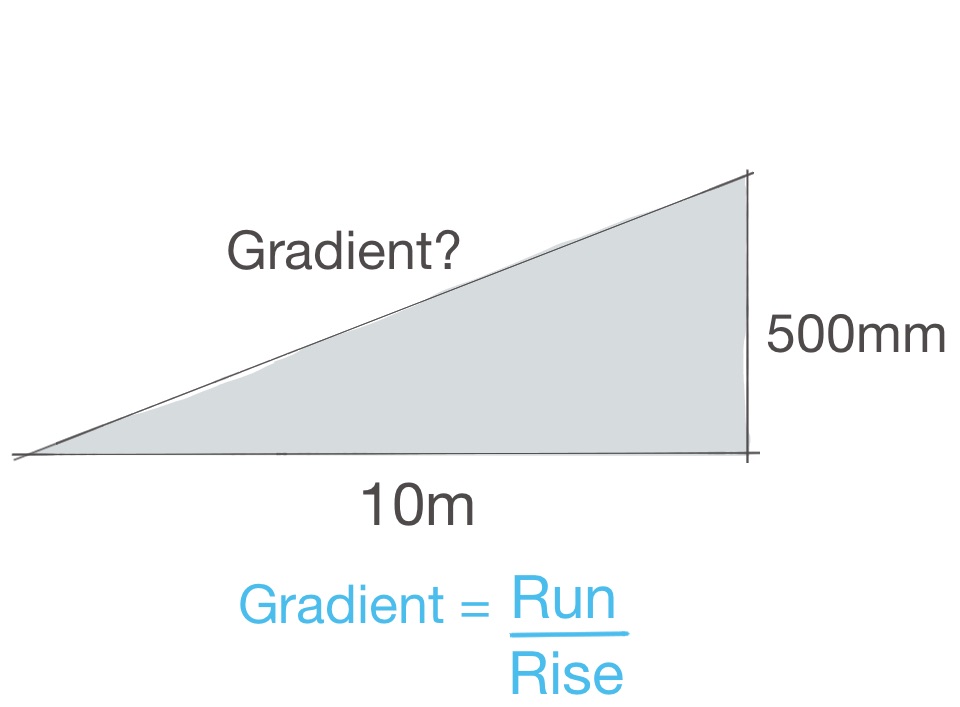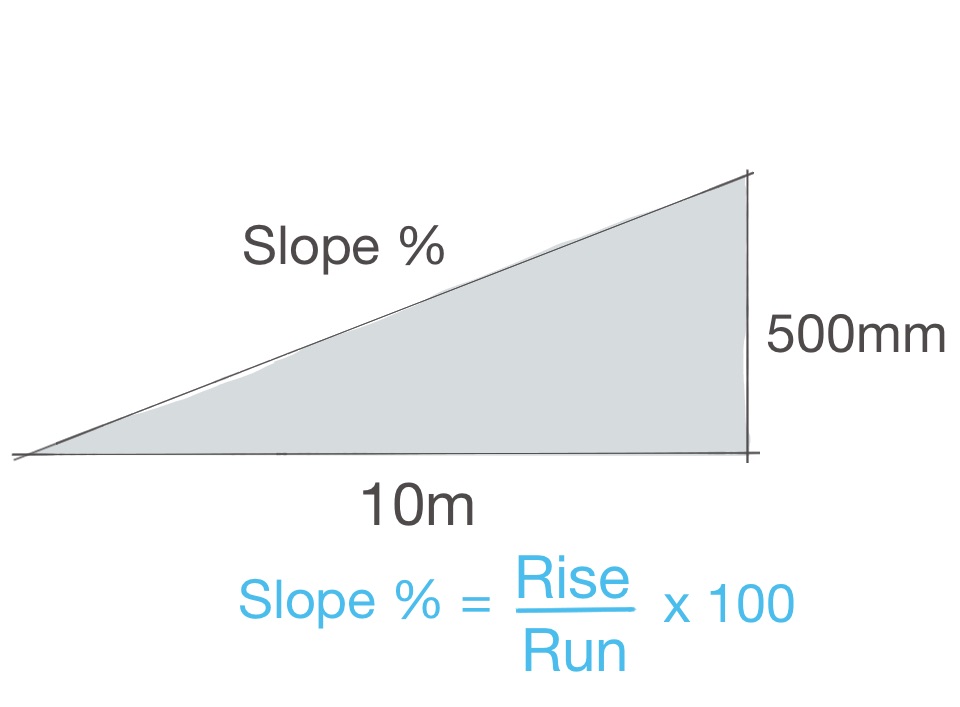As an architect you will need to know how to calculate slopes and gradients in differing situations. The most common occurrence of this is working with ramped access to buildings, groundworks, car parks and so on. Slopes can be measured in angles, percentages and ratios. For this post I will focus on the measurement of slopes in ratios, mainly because gradient ratios are stated in the building regulations. At the end I will also take a quick look at slope percentages and how to work them out.
Approved Document Part M of the building regulations specifies limits for ramp gradients for access to a building. If access to a building is too steep it is not deemed to be a safe access and creates difficulty for people in wheelchairs who may not have the strength to propel themselves up a slope, or may have difficulty slowing down when descending a slope that is too steep. Some people find they need to stop frequently when ascending/descending ramp and therefore suitable landings are required at specified intervals to allow for this.
The table below shows the guidelines from the building regulations:


To work out the gradient of an existing slope you will need the distance of the slope (run) and the height of the slope (rise). The method that follows may not be the most mathematical way to work out the ratio gradient of a slope – but it is really simple and has always worked for me!
Remember to convert units so they are the same. For example, we have a 10m ramp run and a rise of 500mm. Convert the run to 10,000mm.
How to work out the gradient

How to work out the rise

How to work out the run

Sign up to our newsletter
Make sure you don’t miss out on anything that is going on at First In Architecture – sign up to the newsletter now. No spam, no funny business, just useful stuff!
How to work out slope percentage

You can get a printable download of this post here:
Click on the download button to sign up.
You might also be interested in:







Handy for my building work.
Cheers .
Please e-mail copy if your video and part M.
Cant seem to be able to download this pdf, I have subscribed is there something I am not doing correctly
Hi Francois, I have emailed it to you directly
The calculations you will be sending me is helpful in my studies.
Is there a grad level that works the gradient out for you?
Not sure….
Excellent; so simple and concise information.
Just what’s required for me to work out a project query.
Thank you.
Bill Darling
Thank you Bill
我是一个刚毕业的建筑学生和学e only recently encountered this site. It’s very neat & well organised. Contents are very easy to understand. Thank you for the things i learned here. I wish you all the very best.
How these lucky person got downloaded block “Slopes and Gradients ” I have booked on 50% from last several days
Hey there Arshad, I have emailed you the pdf. Please check your inbox. Any problems – let me know
Excellent for mine learners
I am not able to download the pdf version. Might have something wrong in the link? How could I get it?
Excellent site by the way.
Many thanks
Hey Tamara, I’ve emailed the pdf to you directly. Any problems please let me know
Hello,
This is really useful, can you please confirm if this is the same calculation that builders use for the garden? I have been told that the garden they are building has 1:17 and is approximate 29 feet. Does this mean the rise is around 50-52cm?
Yes, based on your figures that is what I would expect the rise to be. Does that sound right according to your project?
WHAT ABOUT FALLING GRADIENTS CALCULATIONS PLEASE
Hi,
What is the maximum slope gradient for ramps for basement parking?
i currently have a 6m runway and a 3,5m height.
I am trying to determine a safe slope for it.
Regards,
PD
Very well explained and easy to follow
I need help! I am struggling to work out the correct ratio for a slope. I know a slabbed path can have a maximum of 1:12. Therefore over a 600mm slab it is within regulation to rise or fall by 50mm per slab. However I’m trying to work out what the ratio is using 680mm distance and 50mm fall. 680 divided by 50 = 13.6 meaning the ratio is 1 in 13.6, This cannot be correct as how can the slope be steeper than 1:12 when the fall/rise is 50mm and it’s over a longer distance than 600mm it’s over 680mm? This is really confusing me any help would be really appreciated .
嗨,克里斯,1:13浅比g的梯度radient of 1:12. So the slab of 600mm with a rise of 50mm is steeper than the 680mm with a rise of 50mm. Your calculations are correct, I think you are just misunderstanding the gradient ratios. 1:20 is a shallow slope, while 1:5 is a steep slope. Hope that helps.
Hi Emma,
Just wondering if this is a typo here.
In your first example, you have stated that gradient=run/rise.
I think it should be gradient = rise/run